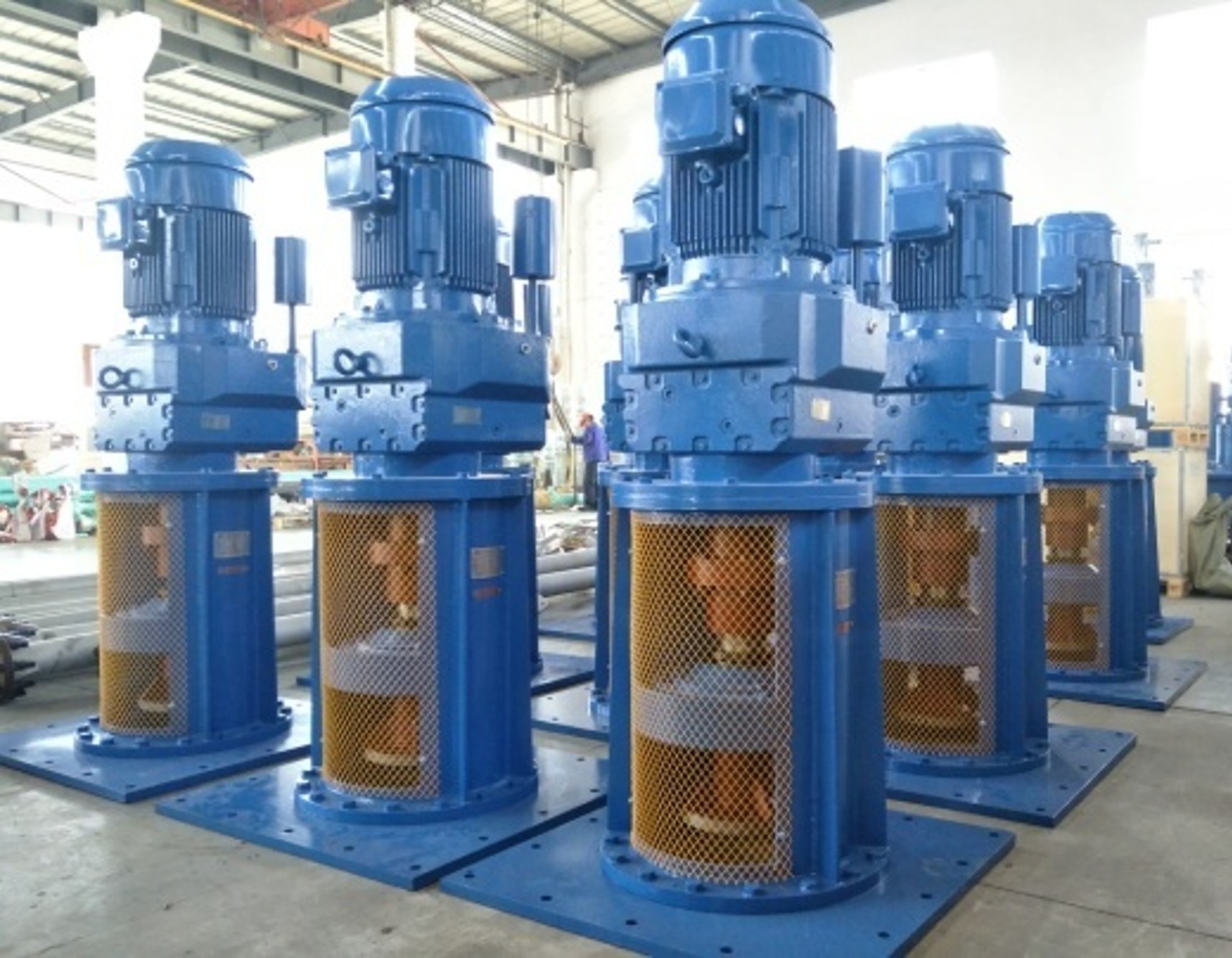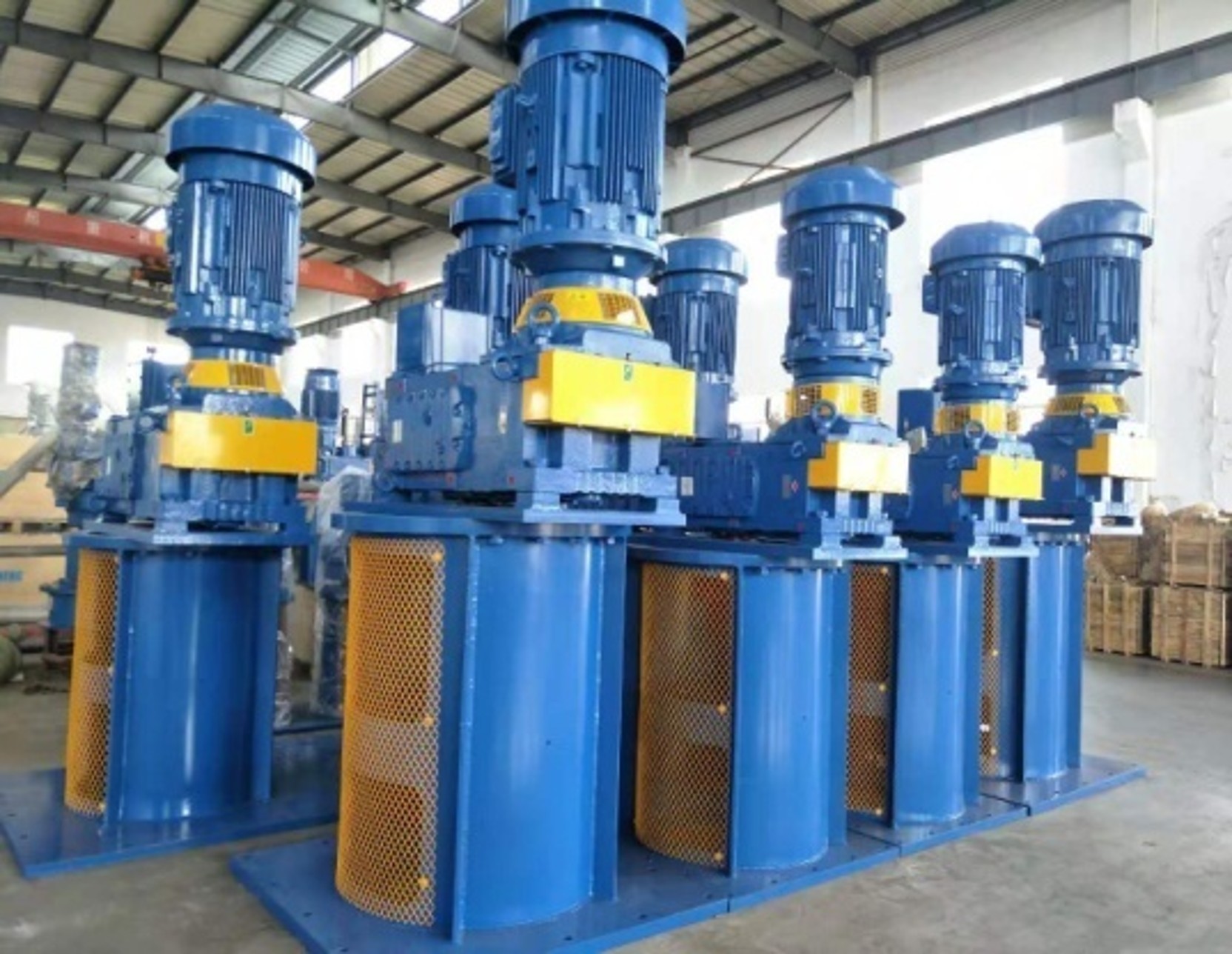Crushing it in industrial filtration isn’t just about meeting goals—it’s about being quick, reliable, and keeping costs low. Got sludgy wastewater or gritty mining leftovers? A rotary filter press totally changes the game. Its constant flow and small footprint tackle messy filtration jobs, cutting down on labor and energy expenses. This guide dives deep into how these machines work, why they outshine older tech, and how they’re boosting efficiency in spots like mines, food factories, and wastewater plants. Curious what makes this gear so awesome? Let’s break it all down.
Core Principles of Vertical Agitator Design
Key Components and Their Functions
A standard vertical agitator’s got a few key parts: motor, gearbox, shaft, impeller, and seals. The motor spins fast—think 1440rpm or more—but mixing usually needs slower speeds, like 50 to 200rpm, so a gearbox steps in to dial it down. The shaft’s job is passing power from the motor to the impeller. Seals keep things tight, stopping leaks or outside gunk from messing with the tank’s contents.
Design Parameters That Impact Mixing Efficiency
Mixing efficiency hinges on several parameters: impeller diameter, blade angle, rotational speed, and shaft length. These factors influence flow rate, shear forces, and power draw. Using advanced CFD tools like FLUENT and MIXSIM allows engineers to simulate different configurations under various operating conditions. Designs are optimized based on user-supplied parameters through simulation of multiple configuration schemes.
Flow Patterns Generated by Vertical Agitators
Vertical agitators can generate axial, radial, or tangential flow depending on impeller design. For example, the variable cross-section and angle impellers provide high axial circulation with low shear rates, making them ideal for suspending solids without excessive particle breakage. This is particularly beneficial in applications requiring gentle agitation but strong bulk movement.
Factors Affecting Mixing Performance
It ain’t just the agitator’s design that calls the shots on mixing results—other stuff plays a big role too. Things like the fluid’s makeup, tank shape, and whether you’ve got baffles in there can make or break performance. Thick or weirdly flowing fluids, like non-Newtonian ones, need more muscle and special impellers to mix evenly. Bigger blades or spiral-shaped designs often do the trick without jacking up power use too much. The tank’s shape—round or boxy—plus baffles, decides if you get wild vortexes or nice, controlled flow. Screw up the match between tank size and impeller when scaling up, and you’re stuck with lousy mixing and wasted energy. That’s why testing on small-scale setups with different baffle setups is a must before going big. The impeller’s type—say, axial-flow or radial-flow—and where it sits on the shaft really shakes up how the flow spreads out. For instance, those sleek axial-flow impellers, first made for phosphoric acid reactors, shine in all sorts of uses since they’re gentler on tank walls and cut down on gas-related corrosion.
Energy Efficiency in Vertical Agitation
As energy costs rise globally, maximizing efficiency in your agitation system becomes increasingly important—not just environmentally but economically.
Power Consumption Relative to Mixing Goals
Energy use must be aligned with mixing objectives—whether it’s suspension of solids or gas-liquid dispersion. Compared to traditional 45° turbine mixers, new-generation axial-flow designs can save 40–50% in energy while achieving identical results in solid-liquid suspension tasks.
Role of Motor Selection and Gearbox Configuration
Selecting an appropriately rated motor is crucial; oversizing leads to unnecessary consumption while undersizing risks failure. Likewise, gearboxes must match torque requirements without compromising speed control accuracy over time.
Optimizing Shaft Length and Diameter for Load Reduction
Long shafts introduce bending moments that increase bearing loads and vibration risk. Thus, optimizing shaft dimensions helps reduce mechanical stress while maintaining structural integrity under load—especially important in tall tanks or high-viscosity operations.
NHD Vertical Agitator Solutions
When precision engineering meets deep industry experience, you get a product line designed not just for functionality but long-term value.
Overview of NHD’s Vertical Agitator Product Line
NHD offers a broad range of vertical agitators that cover power ratings from 1.5kW up to 1000kW with speed ranges from 0.01–3000 rpm. These systems support liquid-liquid (miscible/immiscible), solid-liquid, gas-liquid or multi-phase mixing operations. Each unit can be tailored using CFD-based simulations combined with real-world testing on China’s largest ADV Doppler model testing platform for agitators.
Explore our side-entry-agitator option if you’re working with large storage tanks—this solution consumes only 1/3–2/3 power compared to central agitators above 1000m³.
Performance Advantages of NHD Custom Engineering
What sets NHD apart is its commitment to customized engineering using validated model testing methods. Our test platform uses torque meters combined with Doppler acoustic velocimetry for real-time measurement of three-dimensional flow fields corresponding exactly with power input at any given moment. This provides unmatched accuracy when designing systems for scale-up scenarios.
Application-Specific Recommendations from NHD
Different industries impose unique demands on mixing equipment—from chemical resistance to hygiene standards—and your choice must reflect these realities.
Chemical Processing Industry Needs
In harsh chemical environments involving aggressive solvents or acids, our axial-flow impellers reduce gas-phase corrosion risks while enhancing mass transfer by minimizing concentration gradients at the liquid surface—ideal for extraction processes like phosphoric acid production.
Water Treatment and Environmental Applications
For large-volume water treatment tanks, side-entry-agitators offer an excellent balance between cost-efficiency and blending effectiveness, especially where foundation costs need minimization without sacrificing performance quality.
Food and Beverage Industry Standards
In sanitary applications where CIP (Clean-In-Place) procedures are mandatory, side-entry-agitators also provide easy access for cleaning while maintaining uniform product consistency throughout batch cycles.
Enhancing Operational Reliability Through Design Optimization
Reliability isn’t just about component durability—it’s about ease of maintenance and minimized downtime over years of operation.
Seal Systems and Bearing Arrangements in NHD Designs
Our seal systems are engineered specifically for high-pressure containment while resisting wear from abrasive media. The bearing arrangements are designed to absorb both radial and axial loads efficiently even under fluctuating process conditions.
Maintenance Access and Serviceability Considerations
Ease-of-access features such as top-mounted drive units make inspection straightforward without dismantling entire assemblies—a critical factor in reducing maintenance windows during shutdowns or changeovers.
Integrating Automation and Control Systems with NHD Agitators
Modern process plants demand flexibility—not just in hardware but also in control logic integration across PLCs or SCADA systems.
Variable Frequency Drive Compatibility for Process Flexibility
All our vertical agitators support VFD integration so you can modulate speed based on viscosity changes or batch-specific requirements without manual intervention—enhancing both product quality consistency and energy savings over time.
Real-Time Monitoring Options to Improve Process Stability
Through sensor integration options including torque sensors and flow meters, real-time monitoring enables predictive maintenance strategies by correlating flow behavior directly with mechanical load metrics, ensuring stable operation even under variable conditions.
FAQ
Q: What type of agitator is best suited for large storage tanks?
A: A side-entry-agitator is ideal for tanks above 1000m³ due to its lower power consumption—only 1/3–2/3 that of central agitators—with comparable blending results.
Q: How do I ensure my vertical agitator performs well during scale-up?
A: Use simulation tools like CFD combined with pilot-scale testing platforms such as ADV Doppler systems that allow accurate prediction of full-scale behavior.
Q: Can I integrate my existing automation system with your agitators?
A: Yes—all models support Variable Frequency Drives (VFDs) and sensor feedback loops compatible with modern PLCs or SCADA platforms for full process control flexibility.



